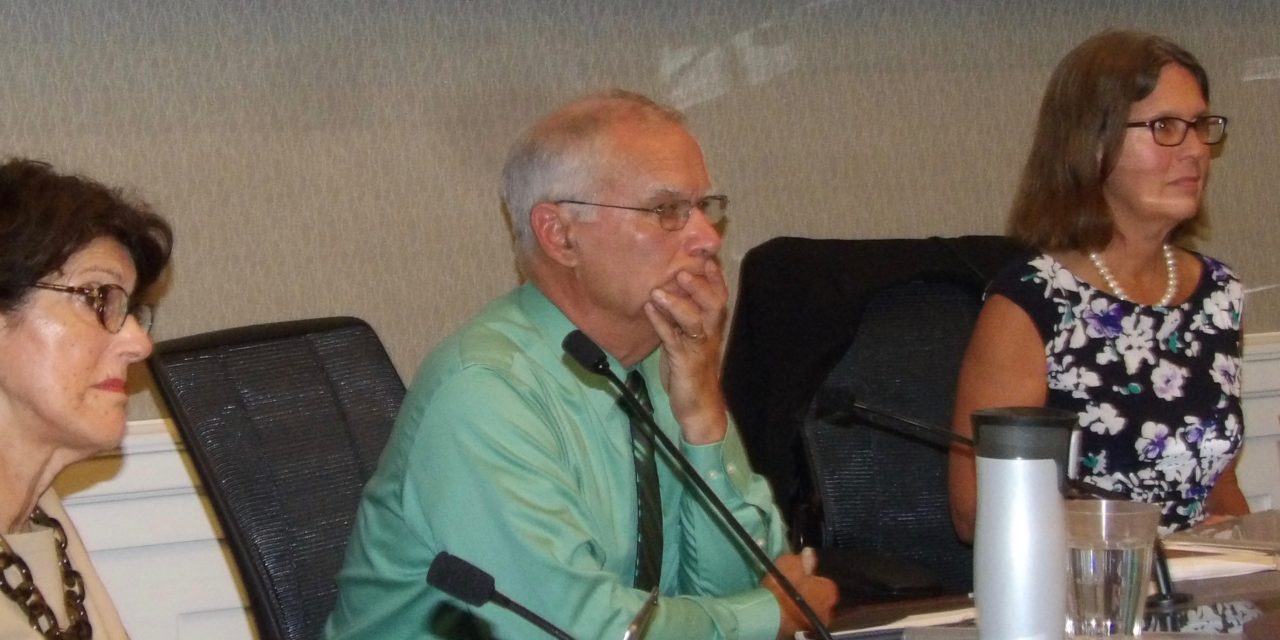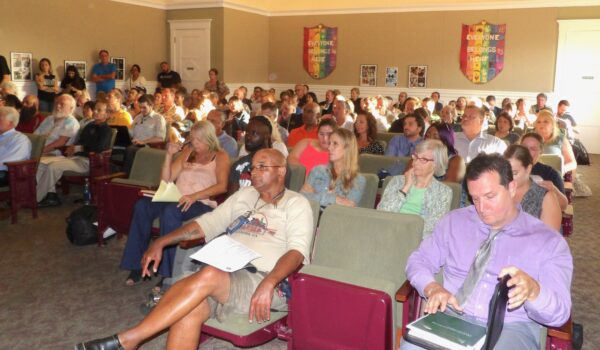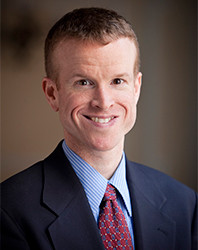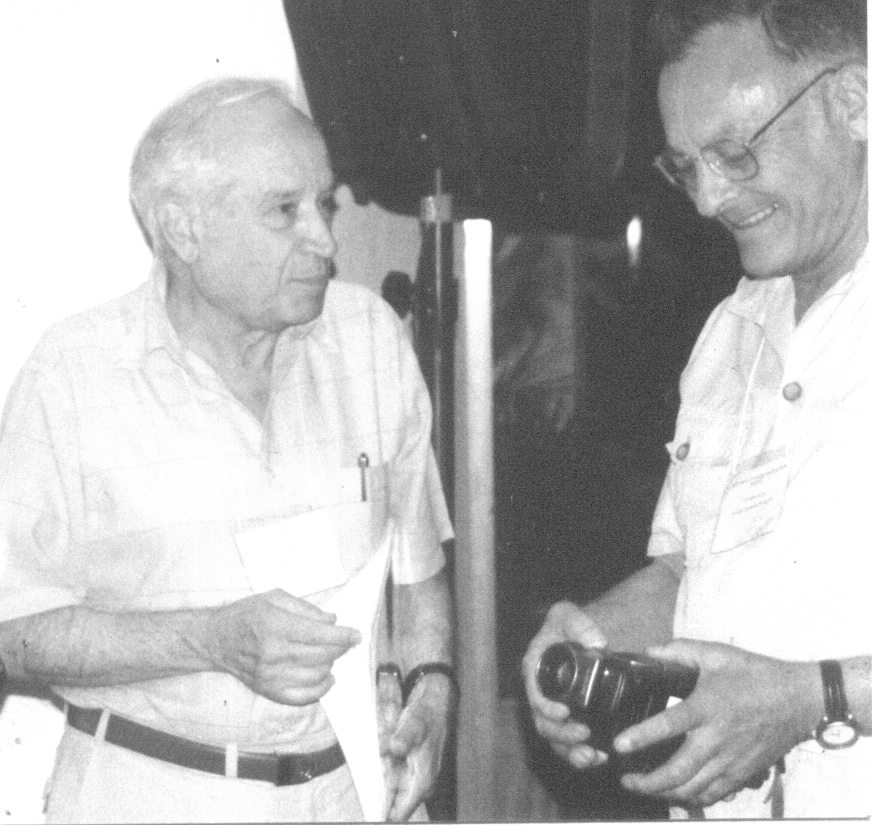It was standing room only September 5 as the City Council held a “workshop” on the prospect of the cannabis industry coming to Alameda. The council intends to come up with an ordinance regulating commercial production and distribution before January 1, 2018, when California’s “legalization” laws kick in.
City staff had paid the SCI Consultancy Group $60,000 to draft an ordinance for the city council to customize. Neil Hall of SCI provided a 20-minute power point presentation on the history of the industry and the relevant laws. Community Development Director Debbie Potter reported that staff had done a “randomized” telephone poll in which 600 Alamedans were asked their views on medical marijuana and 62 or 63 percent were approving. Slightly lower, she noted, than the 68% of voters who supported statewide legalization in November, 2016.*
The council then heard from members of the public for three hours. Everybody had a sense of being a stakeholder, from the woman who had to leave the island to obtain cannabis for her husband —“it was for palliative care!” she said— to the man who expressed concern about people driving loaded.
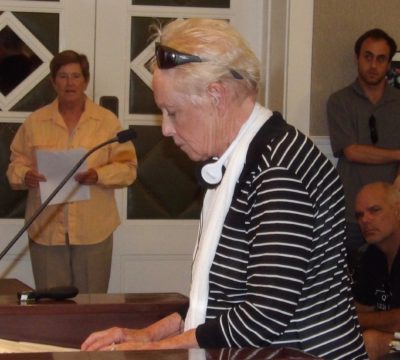
Gretchen Lipow told of seeing other Alameda residents when she obtained medical cannabis at an Oakland dispensary.
Dannis Evanosky of the Sun, who came to photograph the poet laureate and caught a few of the public comments, lamented that people were discussing the merits of medical marijuana in general terms instead of focusing in practical terms on the proposed ordinance. (Central casting, get me a gruff old-school editor.)
But the ordinance Alameda adopts will ultimately reflect the five council members’ underlying attitudes towards cannabis as medicine —especially its safety profile. And their individual inclinations were evident in the 90-minute discussion that followed the public input.
Only Mayor Trish Herrera Spencer seems fundamentally pro. Marilyn Ezzy-Ashcraft and Frank Mattarese seem fundamentally anti. Jim Oddie has said his main interest is generating revenue for the city. Malia Vella could be the swing vote on key aspects of the ordinance when the council resumes the discussion at a special meeting, the date of which has not been set.
The council directed city staff to provide answers to the numerous questions raised during the meeting that could affect the wording of the ordinance. City manager Jill Kleimach noted that it was a complex task.
Here is one observer’s notes on where the five council members stood as of September 5 on specific questions that the ordinance will presumably address:
Jim Oddie initially wanted to add inhalation by vaporizer —“vaping”— to Alameda’s current ban on smoking, but changed his view. He favors a “labor peace agreement” as called for by the California law, which mandates that businesses with more than 20 employees should be union shops. He also supports California’s 600-foot separation between possible kid hangouts and any cannabis-related enterprise. He likes the idea of Alameda incentivizing local ownership. He would “consider an equity program” conferring some advantage to people victimized by marijuana prohibition. He would consider having up to three dispensaries and wants no caps on other businesses (cultivation, manufacture, analytic labs).
Malia Vella wants a phased rollout starting with labs and manufacturing facilities. No retail for now because it will probably entail hiring more police. 1,000 feet from schools and parks. No priority should go to local owners because the city wants the best proprietors with the most expertise. A labor peace agreement for businesses with 10 or more employees (more pro-union than the state law). Each applicant should organize a town hall meeting to get feedback.
Frank Mattarese wants a “slow” phased approach. 1000 feet from schools and parks. If there’s a dispensary allowing on-site vaporization Alameda Police Department will be “overwhelmed” and more officers will be needed. He doesn’t think the cannabis industry will generate tax revenues in excess of the expenses that city will incur.
Marilyn Ezzy-Ashcraft also advocates going slow and thinks labs should be the first businesses permitted. She wants the council to get input from the school district and the Boys and Girls Clubs before issuing an ordinance. She wants 1,000 feet between schools, parks, and cannabis-related enterprises. She thinks delivery services make dispensaries unnecessary. “Experience” and “track record” are more important than local residence in choosing owners and employees. She does not think employment in the cannabis industry should be encouraged. “We don’t want jobs like Humboldt.” Nothing on Park Street or Alameda Point. She’s worried about delivery to underage persons. No cultivation, indoor or outdoor.
Trish Herrera Spencer is a triple-negative breast cancer survivor and approaches The Marijuana Question accordingly. She would rather move fast than slow on bringing cannabis businesses to Alameda. She questioned whether Alameda’s police department has been better than Oakland’s when it comes to “racist citings” of citizens. Her preference is for local owners and local hires. She thinks California’s buffer of 600 feet between kid hangouts and cannabusinesses is adequate. She thinks dispensaries provide services that delivery services don’t (education, socialization) and supports onsite vaporization at dispensaries —in part so that tenants forbidden to smoke in their apartments will have a place to do so. She wants Alameda’s Economic Development department to play the leading role in implementing the ordinance, with the Police Department responsible for doing background checks on would-be proprietors. The mayor opposes any requirement that employees be unionized as “a barrier” to cannabis businesses coming to Alameda.
Although the council’s exercise in democracy is on hold while the staff does research, Alameda’s public discussion re mariuuana regulation resumes Wednesday, Sept. 20, when the Chamber of Commerce dedicates a meeting to the subject at the College of Alameda, 4 to 7 p.m. The keynote talk by Assemblyman Rob Bonta will be on “Cannabis and Jobs.” The C of C session is free and open to the public.
* Debbie Potter is not the only government official to rely on telephone polls when it comes to attitudes re marijuana. But doesn’t common sense say that a certain percentage of the citizenry will keep their pro-MJ views to themselves —especially in contexts where they have no anonymity? The herb is still illegal under federal law.

